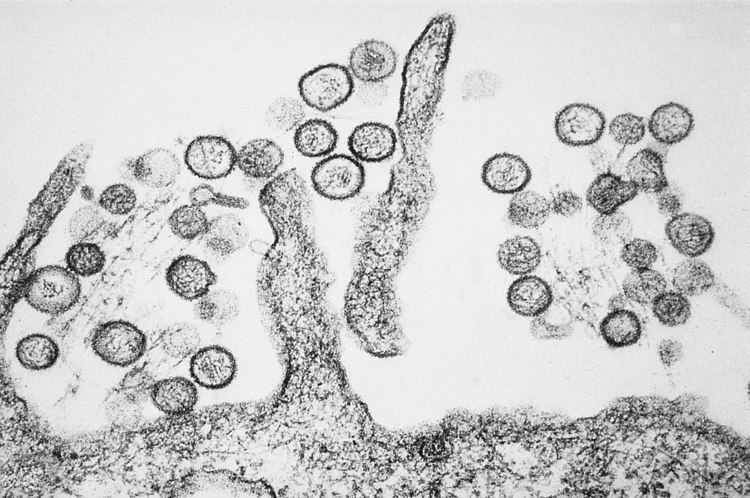Group Group V ((−)ssRNA) Family Bunyaviridae | Order Unassigned Genus Hantavirus | |
 | ||
Hantavirus pulmonary syndrome (HPS) is one of two potentially fatal syndromes of zoonotic origin caused by species of hantavirus. These include Black Creek Canal virus (BCCV), New York virus (NYV), Sin Nombre virus (SNV), and certain other members of Hantavirus genera that are native to the United States and Canada. Specific rodents are the principal hosts of the hantaviruses including the hispid cotton rat (Sigmodon hispidus) in southern Florida, which is the principal host of Black Creek Canal virus., the rice rat also in the south east, the deer mouse (Peromyscus maniculatus) in Canada and the Western United States is the principal host of Sin Nombre virus. The white-footed mouse (Peromyscus leucopus) in the eastern United States is the principal host of New York virus.
Contents
Epidemiology
Hantavirus pulmonary syndrome was first recognized during the 1993 outbreak in the Four Corners region of the southwestern United States. It was identified by Dr. Bruce Tempest. It was originally called Four Corners disease, but the name was changed to Sin Nombre virus after complaints by Native Americans that the name "Four Corners" stigmatized the region. It has since been identified throughout the United States.
Transmission
Transmission by aerosolized rodent excreta still remains the only known way the virus is transmitted to humans. In general, droplet and/or fomite transfer has not been shown in the hantaviruses in either the pulmonary or hemorrhagic forms.
Signs and symptoms
Prodromal symptoms include flu-like symptoms such as fever, cough, myalgia, headache, lethargy and shortness of breath, which rapidly deteriorates into acute respiratory failure. It is characterized by the sudden onset of shortness of breath with rapidly evolving pulmonary edema; it is often fatal despite mechanical ventilation and intervention with potent diuretics. It has a fatality rate of 38%.
Treatment
There is no cure or vaccine for HPS. Treatment involves supportive therapy, including mechanical ventilation with supplemental oxygen during the critical respiratory-failure stage of the illness. Early recognition of HPS and admission to an intensive care setting offers the best prognosis.
Prevention
Rodent control in and around the home or dwellings remains the primary prevention strategy, as well as eliminating contact with rodents in the workplace and campsite. Closed storage sheds and cabins are often ideal sites for rodent infestations. Airing out of such spaces prior to use is recommended. People are advised to avoid direct contact with rodent droppings and wear a mask while cleaning such areas to avoid inhalation of aerosolized rodent secretions.
